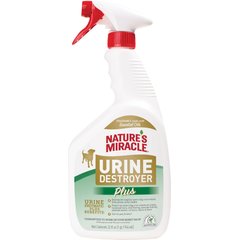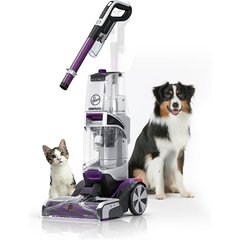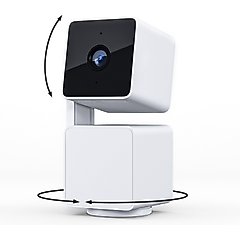How To Get Rid of Dog Pee Smell
Potty accidents: When you’re a pet parent, they’re sometimes a part of life. If your dog has an accident inside the house, cleaning up the mess as soon as possible is essential. It’s not only hygienic (no one wants dog urine on the carpet), but it encourages your dog not to repeat the behavior.
Whether your pup is house soiling because they’re overly anxious or simply so excited to see you, we chatted with cleaning experts to bring you these tips to remove pee stains and keep your surfaces smelling fresh and clean.
How To Get Rid of Dog Pee Smell
If untreated, dog urine stains can leave behind unpleasant smells. Jay Kellis, a chemist with BISSELL, recommends the following steps to remove pee stains and eliminate urine odors from any surface:
1. Track Down the Source of the Smell

First, to get rid of dog urine smell, you must figure out where the smell is coming from. Sometimes this is obvious—you just use your nose! Other times, you may need help pinpointing the exact spot.
If you’re unsure where your dog went potty inside the house, try using an ultraviolet light (commonly known as a blacklight) to find the soiled areas. It will illuminate any hidden pet stains that need your attention.
2. Remove the Dog Pee With a Paper Towel

Dealing with a new accident? Use a paper towel to soak up as much dog urine as possible. Sure, it’s a gross job, but it will help with the remaining steps.
3. Saturate the Stain With an Enzymatic Cleaner

Use a spray bottle to spray the urine stain thoroughly with an enzyme cleaner. Don’t be afraid to spray the area surrounding the stain, too, and make sure it is thoroughly saturated with cleaner.
After thoroughly spraying the affected area, blot the urine stain with a clean towel. Then, respray the enzymatic cleaner.
Cover the affected area with a damp towel and allow it to set. The instructions on your cleaner will tell you how long it needs to set.
Why use an enzymatic cleaner? Because it is both a stain remover and an odor eliminator. According to Kellis, the enzymes found in these cleaners are like the healthy probiotics in some types of yogurt. They help “eat” the microscopic particles that make up the pee stain and cause urine smells.
Recommended Products
4. Extract the Liquid With a Vacuum
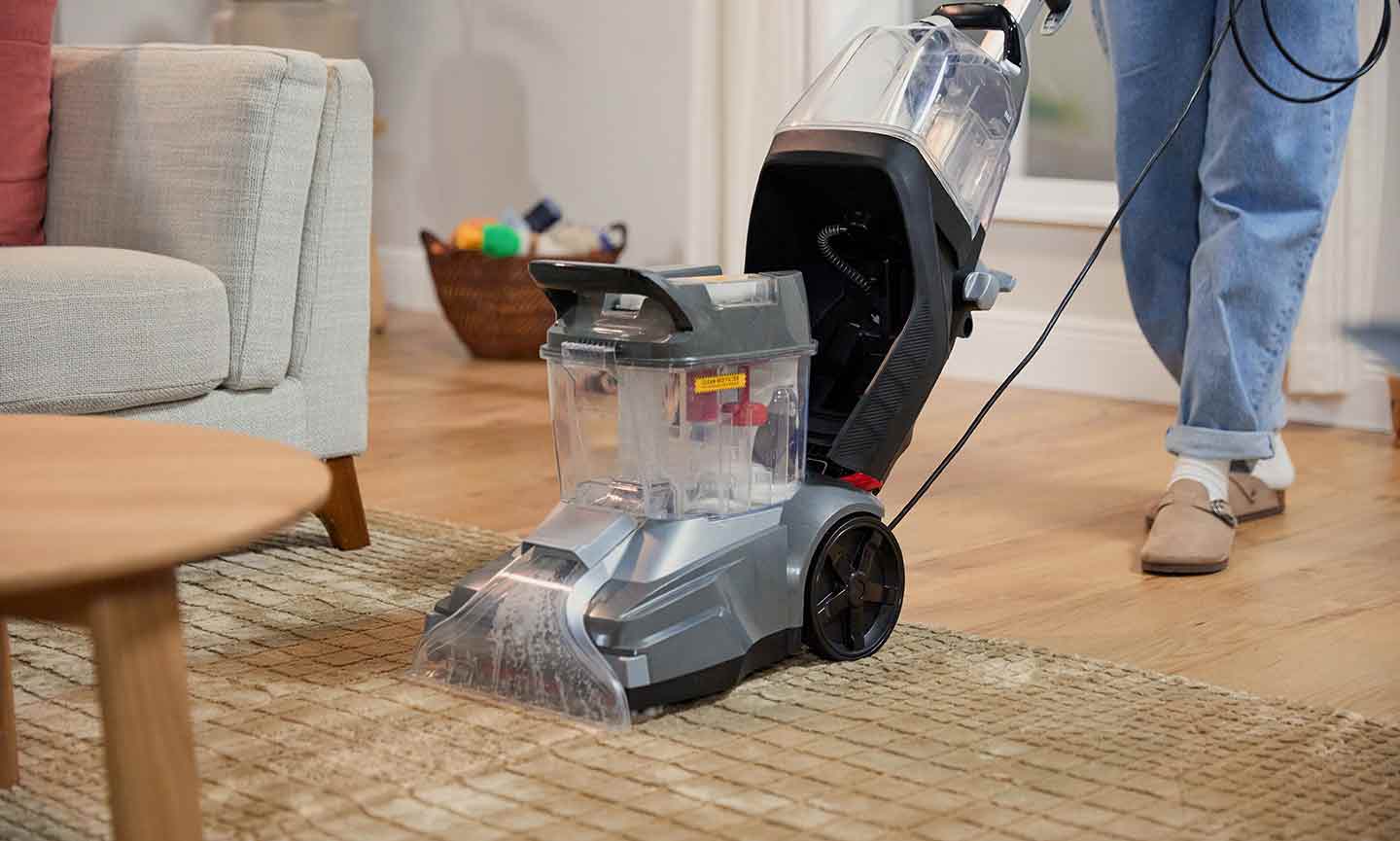
After the enzymatic cleaner has set for 24 hours, use a vacuum to remove any excess liquid from the surface. Make sure you use a wet-dry vacuum designed for cleaning carpets and upholstery to suck out all the remaining liquid.
Kellis recommends making two “wet” passes with your carpet cleaning vacuum. That means you hold down the spray button on the machine and move the vacuum forward and backward. Follow that by two “dry” passes. In other words, you suck up liquid but don’t press the spray button. Keep working with your vacuum until the stain is completely gone.
If you don’t own a wet-dry vacuum, you can rent a carpet cleaner or a wet vac (commonly referred to as a shop vac) at some home improvement stores.
If that’s not an option, you can also use a clean towel or paper towel to thoroughly soak up the liquid. Keep in mind, a vacuum is the best method for removing liquid, especially from carpets and upholstery. That’s because any remaining moisture in the fabric can cause mold. Excess cleaning solution you leave behind can discolor your surfaces over time too.
Recommended Product
5. Rinse the Surface (Optional)
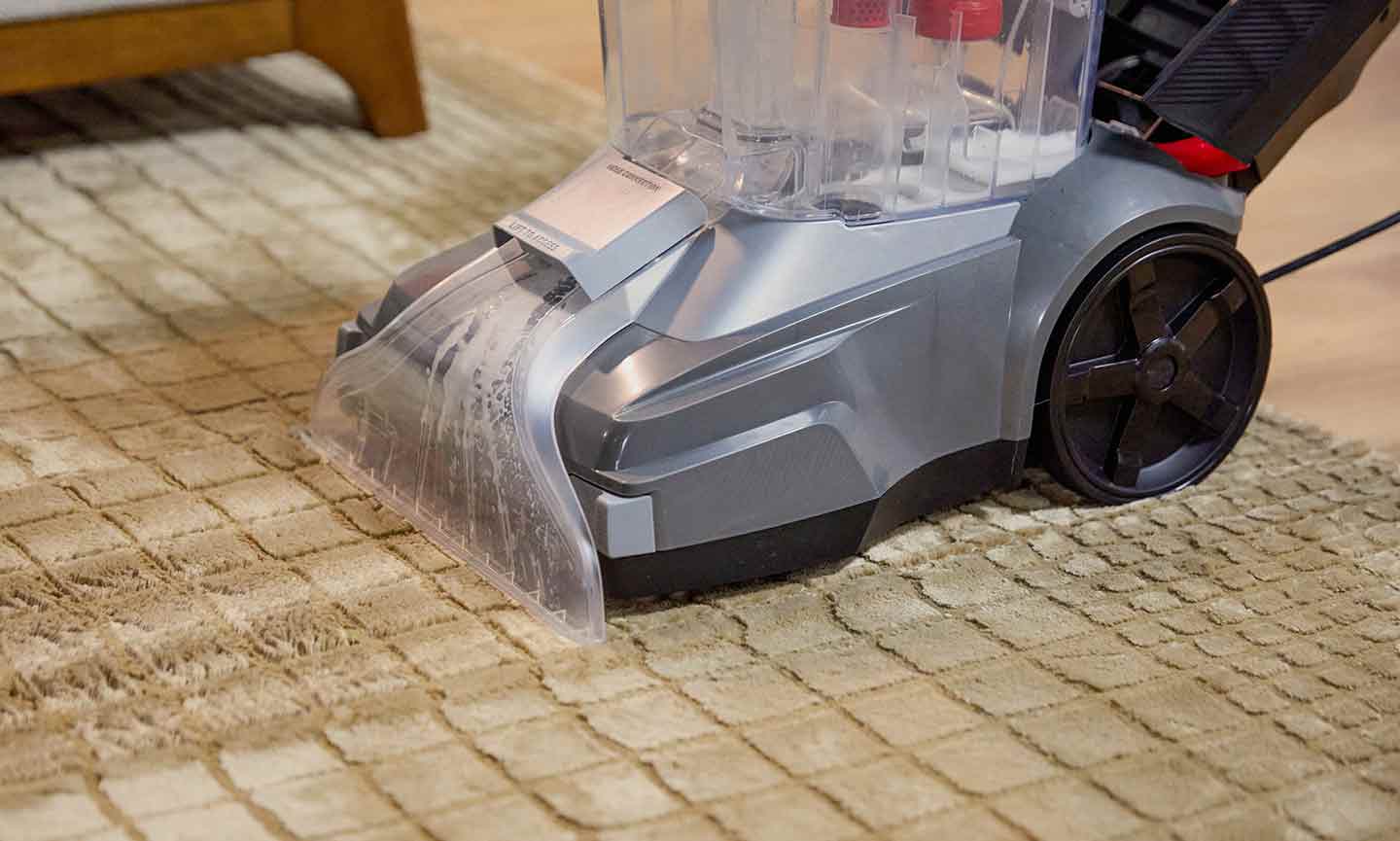
Once you no longer see the urine stain, you can fill your carpet cleaning vacuum with warm water and make some additional wet and dry passes over the affected area. This isn’t required to remove the smell, but it helps to remove any excess cleaning products from the surface.
How To Get Dog Pee Smell Out of Carpets
Using an enzymatic cleaner is still the best way to eliminate urine stains (and the pet odors that come with carpet stains). It will also discourage your dog from marking the carpet again.
If your pet has occasional accidents, having a small portable carpet cleaning vacuum for spot cleaning can be helpful. You may want to invest in an upright carpet cleaner if you’re dealing with more extensive or multiple stains. This will allow you to clean a larger surface more quickly. You can also contact a professional cleaning service for rooms with multiple prominent pet urine stains.
How To Get Dog Pee Smell Out of the Couch
Before cleaning your couch, always check the manufacturer’s tag for specific instructions. On upholstery, this is called the manufacturer’s cleanability code tag.
Kellis says that if the fabric is coded “WS” or “W,” it’s safe to clean. If your tag is coded “X” or “S,” the fabric it’s made from is unsafe to clean.
Even if you believe your couch fabric is safe, it’s essential to test your cleaning products or neutralizer on a small hidden area of the fabric. That way, you can be sure you won’t cause any damage before covering your furniture in your cleaning products.
To clean your couch, follow the steps above on the area your dog has soiled. If possible, use a wet/dry vacuum or shop vac with a hand attachment to make wet and dry passes over the area.
How To Remove Dog Urine Smell From Hardwood Floors
Cleaning dog pee off of tile or hardwood floors can be reasonably simple. Usually, you can just wipe up any puddles of dog pee with a cloth or paper towel.
However, if you don’t take care of dog urine stains right away, they can cause damage to hardwood flooring. After wiping up any accidents, you should use a pet-safe cleaning solution with a sanitizing formula.
How To Get Dog Pee Smell Out of a Mattress and Other Furniture
As with couches, it’s important to check your manufacturer’s tag to determine whether your mattress or furniture fabric is able to be cleaned. Test your cleaner on a small part of the fabric before spraying it over the entire stain.
The cleaning process for mattresses and other furniture is similar to that of a couch. Use a paper towel to soak up any excess liquid, then apply an enzymatic cleaner, let it set, and do wet/dry passes with a vacuum or shop vac—ideally one with a hand attachment.
How To Stop a Dog From Peeing in the House
According to Kate Anderson, DVM, a veterinarian and veterinary behaviorist in Ithaca, New York, dogs pee for the same reason humans pee—they’ve got to go! Whether dealing with a medical issue or reacting to a change in their environment, dogs aren’t trying to be mischievous or malicious when they leave pet stains inside the house.
Try these tips to prevent future accidents.
1. Check in With Your Vet
Typically, the first thing you see with a medical problem is a change in behavior—like peeing in the house. If your dog has a single accident, it’s probably not a cause for concern. But if a previously house-trained dog starts regularly peeing in the house, contact your veterinarian.
Some common health problems that can cause house soiling include urinary tract infections, diabetes, and kidney infections.
2. Revisit the Steps of Potty Training
If your dog was previously house-trained and is having accidents, you may need to review the steps of house-training with them again. That may require temporarily confining them in a smaller space that will be easier to keep neat and clean.
You should also reinforce the behavior you want to see. In other words, repeatedly reward your dog when they use the bathroom outside.
3. Don’t Punish Your Dog
Dr. Anderson emphasizes that pet parents should avoid punishment when their dog pees inside the house.
A common misconception is that you should rub your pet’s nose in dog urine to keep them from repeating the behavior. This is not effective at stopping the behavior.
“Any form of punishment will just teach your dog to go pee when you’re not looking,” she says.
4. Provide Pee Pads Around the Home
Training your dog to use pee pads can be a good solution if you have an older dog or don’t have easy access to outdoor spaces.
According to Dr. Anderson, puppies can develop a substrate preference (aka a preference for a specific type of surface or material, such as grass or a pee pad, to pee or poop on) at around 9 weeks old, so it is crucial to provide the right products to use when it’s time to go.
5. Train Your Dog To Go to the Bathroom on Your Command
Let’s face it; dogs can get distracted when it’s time to go to the bathroom. Dr. Anderson recommends training your dog to use the bathroom on cue to ensure they go when you take them out.
When you are outside, start saying a consistent phrase (such as, “Go potty!” or “Get busy!”) before your dog does their business. It may take awhile, but once your dog associates this phrase with potty time, it will help them stay focused.
6. Keep Careful Track of Your Dog’s Behavior
If you’re trying to determine the source of your dog’s change in bathroom behavior, you can keep a record. Use our potty training chart to make a note every time your dog pees or poops inside the house.
Is it only when you’re away? Your dog might have an issue with separation anxiety.
Do you only notice urine stains when new people are around? Maybe strangers give your dog anxiety.
You can also set up cameras inside your house to see what your dog is up to when you’re not home.
Recommended Products

